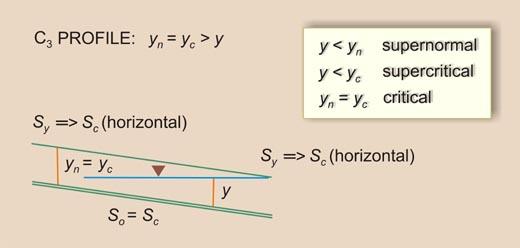FALL 2016
SECOND MIDTERM
NOVEMBER 7, 2016, 1600-1650
Name: __________________________ Red ID No. _______________________ Grade: ________
Instructions: Closed book, closed notes. Use engineering paper.
When you are finished, staple your work in sequence (1 to 4),
and return this sheet with your work.
(25%) A weir is located at the downstream end of a wide rectangular channel of bottom slope So = 0.004 and dimensionless Chezy friction factor f = 0.004. The unit-width discharge in the wide rectangular channel is q = 0.5 m3/s/m. Immediately upstream of the weir, the flow is subcritical, with depth 1.8 m.
- Calculate the Froude number of the normal flow in the upstream channel.
- Calculate the normal flow depth in the upstream channel.
- Calculate the normal flow velocity in the upstream channel.
- Calculate the length of the C1 water-surface profile.

- Calculate the Froude number of the normal flow in the upstream channel.
(25%) A supercritical flow channel with So = 0.03 flows into a critical flow channel of So = 0.003. The dimensionless Chezy friction factor f is the same is both channels. The unit-width discharge is 2.5 m2/s. Find the length of the C3 water surface profile in the critical flow channel.

(25%) Please answer the following questions in a brief statement.
- What is the difference between the brute force method and Newton's iteration to solve the normal depth equation? Be specific.
- How many types of water surface profiles (WSP) are there in gradually varied flow (GVF)? Which water surface profiles are completely horizontal?
- In gradually varied flow in a hydraulically wide channel, the flow depth gradient Sy is a function of three parameters. What are these?
- What is the typical range of variation of the angle of friction φ in granular materials (sand and gravel)?
- When the water is clear of sediment, does it tend to erode the boundary more, or less? Why? Be specific.
(25%) State eight (8) differences between the direct step and standard step methods of steady gradually varied flow computation.